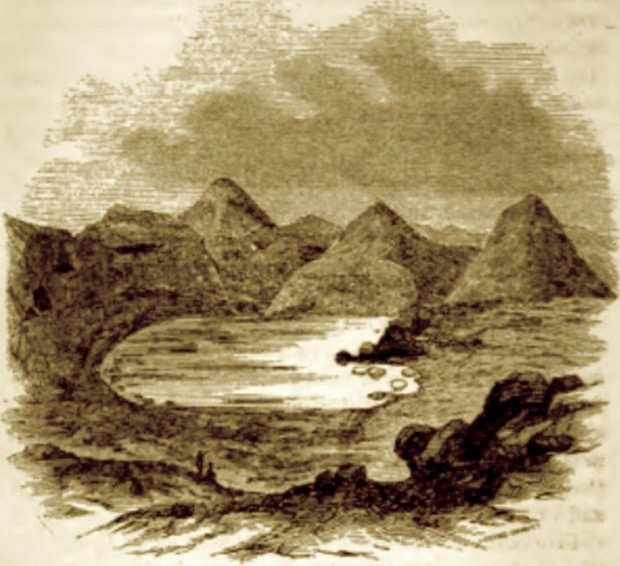In 1853, newspaperman George Washington Bates and his Hawaiian interpreter visited Nomilu Fishpond on Kaua‘i’s South Shore while touring the Hawaiian Islands. Bates first saw the pond on horseback from atop the pali that rises above it and, having been
In 1853, newspaperman George Washington Bates and his Hawaiian interpreter visited Nomilu Fishpond on Kaua‘i’s South Shore while touring the Hawaiian Islands.
Bates first saw the pond on horseback from atop the pali that rises above it and, having been told beforehand that it was fathomless, was anxious to test its depth.
Below the pond by the beach was a small fishing camp, which was temporarily deserted when Bates entered it, except for two Hawaiian women, the others having gone fishing.
When Bates’ interpreter informed the women of his wish, one of the women, a good-natured mother of nine children named Emele, assured them she could easily take a sounding of the 20-acre pond.
Emele soon found a light wiliwili log about 6 feet long by 6 inches wide for use as a floater and with it and a sounding line in hand, waded into the pond.
She then proceeded to swim across the pond while holding the log under her chest with one hand and the sounding line in the other, and at intervals she would pause to let down the line and knot it on the surface when she felt bottom.
When she was finished, Bates examined her sounding line and discovered the depth of the pond varied from 30 to 66 feet.
Although Emele hadn’t asked for compensation, Bates, in admiration of her feat, paid her.
Bates also learned that her youngest child, Lapouli, had recently been sick. Frantic with grief one evening, Emele had walked five miles from her home over rugged terrain in darkness and rain to the Koloa Mission Station for medicine.
Dr. Smith begged her to remain overnight, but she returned home with her medicine that evening in the rainstorm.
Weeks later, Emele’s self-sacrifice and devotion was rewarded when little Lapouli recovered.


